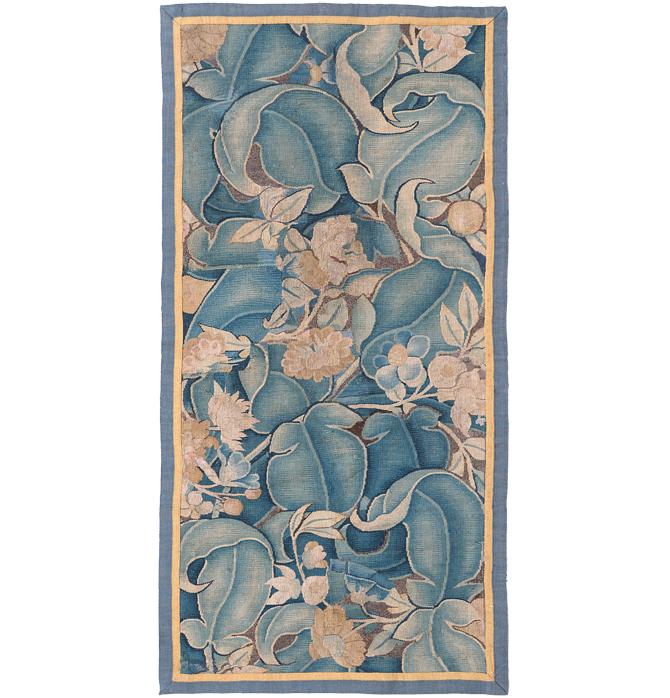
A rare Flemish large-leaf tapestry panel
Enghien or Grammont, mid-16th century.
5ft 3 in x 2ft 8 in : 161cm x 80cm
The design of large curling dentated leaves, verging to a surrealist form, reflected the new naturalism and the study of botany. This was a period when the great botanical gardens were first being developed and new plants were introduced to Europe from Asia and the New World. They were incorrectly described as cabbage leaf or feuilles de choux verdures - in fact they are enlarged acanthus or bear’s breech. The earliest surviving examples are the two armorial hangings woven in 1528 by Henri van Lacke of Enghien for Margaret of Austria that are now in the Iparmuveszeti Museum in Budapest.
All the major world museums have examples of these tapestries either fragmented panels or complete examples: The Metropolitan, New York, The Victoria and Albert Museum, London, The Louvre, Paris, The Fine Arts Museum of San Francisco, The Arts Institute of Chicago and the Bayerische National Museum, Munich.
The present tapestry retains fresh original colour with little restoration, the surreal forms allows the tapestry to be used in both traditional and modern interior design schemes, confirming that good design is timeless.